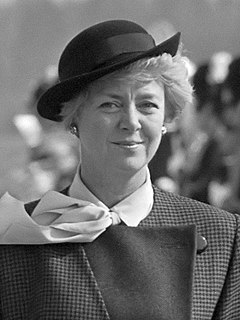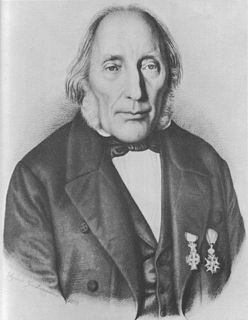
Reykjavík is the capital and largest city of Iceland. It is located in southwestern Iceland, on the southern shore of Faxaflói bay. Its latitude is 64°08' N, making it the world's northernmost capital of a sovereign state. With a population of around 131,136, it is the centre of Iceland's cultural, economic and governmental activity, and is a popular tourist destination.

The Alþingi is the supreme national parliament of Iceland. It is the oldest surviving parliament in the world. The Althing was founded in 930 at Þingvellir, situated approximately 45 kilometres (28 mi) east of what later became the country's capital, Reykjavík. Even after Iceland's union with Norway in 1262, the Althing still held its sessions at Þingvellir until 1800, when it was discontinued. It was restored in 1844 by royal decree and moved to Reykjavík. The restored unicameral legislature first came together in 1845 and after 1874 operated in two chambers with an additional third chamber taking on a greater role as the decades passed until 1991 when Althing became once again unicameral. The present parliament building, the Alþingishús, was built in 1881, made of hewn Icelandic stone. The unicameral parliament has 63 members, and is elected every four years based on party-list proportional representation. The current speaker of the Althing is Birgir Ármannsson.

Vigdís Finnbogadóttir is an Icelandic politician who served as the fourth president of Iceland from 1980 to 1996. She was the world's first woman who was democratically elected as president. With a presidency of exactly sixteen years, she is the second longest-serving elected female head of state of any country to date. Currently, she is a UNESCO Goodwill Ambassador, and a member of the Club of Madrid. She is also to-date Iceland's only female president.

Niels Ryberg Finsen was a Danish-Faroese physician and scientist. In 1903, he was awarded the Nobel Prize in Medicine and Physiology "in recognition of his contribution to the treatment of diseases, especially lupus vulgaris, with concentrated light radiation, whereby he has opened a new avenue for medical science."

The University of Iceland is a public research university in Reykjavík, Iceland and the country's oldest and largest institution of higher education. Founded in 1911, it has grown steadily from a small civil servants' school to a modern comprehensive university, providing instruction for about 14,000 students in twenty-five faculties. Teaching and research is conducted in social sciences, humanities, law, medicine, natural sciences, engineering and teacher education. It has a campus concentrated around Suðurgata street in central Reykjavík, with additional facilities located in nearby areas as well as in the countryside.
Icelandic Sign Language is the sign language of the deaf community in Iceland. It is based on Danish Sign Language; until 1910, deaf Icelandic people were sent to school in Denmark, but the languages have diverged since then. It is officially recognized by the state and regulated by a national committee.

Bandalag íslenskra skáta is the national Scouting and Guiding organization of Iceland. Scouting was founded in Iceland in 1912 and was among the earlier members of the World Organization of the Scout Movement in 1924. Guiding in Iceland was founded in 1922 and among the founding members of the World Association of Girl Guides and Girl Scouts.

The Catholic Church in Iceland is part of the Catholic Church, under the spiritual leadership of the Pope. The island comprises a single diocese, the Diocese of Reykjavík. As of 2015, the ordinary is Bishop Dávid Bartimej Tencer. The diocese is not part of any ecclesiastical province, and the bishop reports directly to the Holy See in Rome.

The Cabinet of Iceland is the collective decision-making body of the government of Iceland, composed of the Prime Minister and the cabinet ministers.
Júlíana Sveinsdóttir was one of Iceland's first female painters and textile artists. Taught initially by prominent Icelandic artist Þórarinn B. Þorláksson, Júlíana settled in Denmark and returned to Iceland in the summers, the visits inspiring her landscape paintings, one of which won the Eckersberg Medal in 1947.

Iceland has been a very isolated and linguistically homogeneous island historically, but has nevertheless been home to several languages. Gaelic was the native language to many of the early Icelanders. Although the Icelandic or Norse language prevails, northern trade routes brought German, English, Dutch, French and Basque to Iceland. Some merchants and clergymen settled in Iceland throughout the centuries, leaving their mark on culture, but linguistically mainly trade, nautical, and religious terms. Excluding these and Latin words, Icelandic has been altered remarkably little since settlement.

Björn Gunnlaugsson was an Icelandic mathematician and cartographer. For the Icelandic Literary Society, he surveyed the country from 1831 to 1843. The results of his work were published in a topographic map of Iceland at a scale of 1:480,000 on four sheets. It was the first complete map of Iceland and, although generally dated to 1844, was not completed until 1848. It was published under the direction of Olaf Nikolas Olsen in Copenhagen. In 1849, a smaller edition on one sheet at a scale of 1:960,000 appeared. For his survey work, Björn received the Order of the Dannebrog in 1846 and the French Légion d'honneur in 1859.

Páll Melsteð was an Icelandic historian, official, editor and member of the Althing. In 1892 he was awarded the Order of the Dannebrog.

Denmark–Iceland relations are the foreign relations between Denmark and Iceland. Iceland was a Norwegian dependency since the Middle Ages and thus became part of the Kalmar Union and Denmark–Norway, both entities dominated by Denmark. After the dissolution of Denmark–Norway, Iceland was a part of the Kingdom of Denmark from 1814 to 1918 and a separate kingdom in a personal union with Denmark until 1944, when Iceland declared independence.
Bogi Thorarensen Melsteð was an Icelandic historian. He wrote articles and books on Icelandic history. He was Member of the Icelandic Parliament (Althing) for Árnessýsla from 1892–1893.
Guðrún P. Helgadóttir was an Icelandic writer, poet, scholar and educator and is widely recognized in Iceland.

Ingibjörg H. Bjarnason was an Icelandic politician, suffragist, schoolteacher and gymnast. She was the first woman to become a member of the Althing, the parliament of Iceland.

Reykjavik Women's Gymnasium was the first secondary school for women in Iceland. It was begun in 1874 by Þóra Melsteð and Páll Melsteð, as a private school. For the first four years the school was located in the home of the founders near the Parliament Building in the center of Reykjavík. In 1909, it was moved to a new building at Fríkirkjuvegur and the primary offering became domestic science. The curriculum was later expanded to include liberal arts.

Björg Carítas Þorláksson was an Icelandic scholar and teacher. After earning her teaching certificate in Ytriey she taught for three years and studied in Denmark, before applying to the Reykjavík Junior College to further her education. Refused admittance, she moved back to Copenhagen and earned a Danish teaching degree. She studied at the Athens Classes to learn Greek and Latin and was admitted to graduate study at the University of Copenhagen. After her marriage, she abandoned her studies to work on the preparation of an Icelandic-Danish Dictionary, for the next two decades with her husband. When the dictionary was completed, his work was recognized and hers was not. Divorcing, she moved to Paris and attained a PhD, the first woman in Iceland to attain the distinction. Suffering from ill-health, she published until her death from breast cancer.

Elín Rannveig Briem née Eiriksdóttir (1856–1937) was an Icelandic teacher and writer who in 1889 published one of Iceland's most popular books, Kvennafræðarinn. Principally a cookbook, it also provided advice to housewives on health, hygiene and economics. The work was based on the classes she gave to her students while headmistress of the girls college at Ytri-Ey near Skagaströnd in the north of Iceland.
















